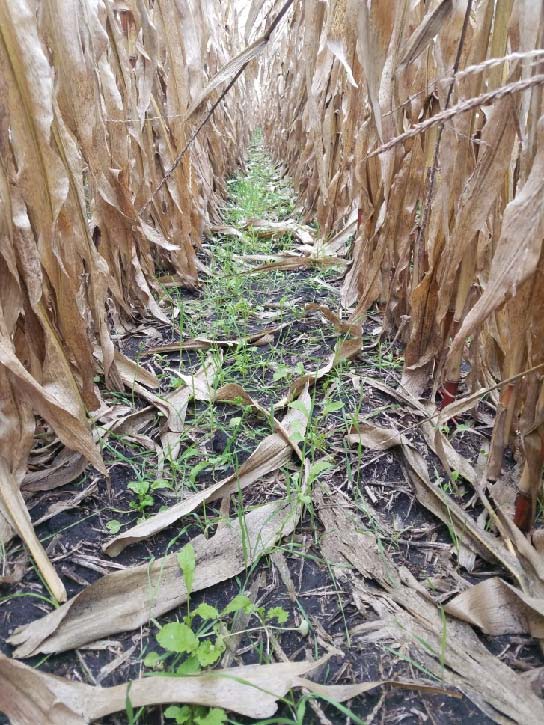Field Days in November highlight cover crop benefits and risk management
posted
on Friday, October 27, 2017
By Ann Robinson, Former IEC Agriculture Policy Director
Cover crops are catching on in Iowa, but to gain their many benefits, we need to drastically increase the practice across the state. That is likely to take new policy tools, along with education and outreach.
Cover crops for Iowa farmers are plants such as small grains, cereal rye or oats, and some brassicas (like turnips) planted between crop seasons to provide a living cover on fields. Numerous studies show cover crops build soil, hold nutrients and water to prevent pollution, and improve wildlife habitat. From a farmer’s point of view, they can also boost long-term productivity, reduce herbicide costs and provide livestock forage. Even so, cover crops add to costs and can be tricky to successfully integrate into a farm’s cropping system.
In Iowa, farmers have increased the acreage of cover crops significantly — from fewer than 10,000 acres in 2009 to an estimated 6 00,000 acres in 201 6 – and many more farmers are interested. This practice is recognized as a key tool in the Iowa Nutrient Reduction Strategy (INRS), which calls for at least 12 million acres or at least 50% of Iowa’s corn-soybean fields.
“Farmers are now seeing the cash in cover crops through improved weed control during the soybean year,” says Sarah Carlson of Practical Farmers of Iowa. Carlson, with PFI farmers members, have been conducting on-farm research to see these positive outcomes. “Getting living roots in the ground year-round through cover crops is one of our best opportunities to achieve conservation goals in row-crop systems while growing corn and soybeans better,” says Carlson, who will be speaking about the practice at two upcoming field days on November 13 and November 21, along with Iowa Secretary of Agriculture Bill Northey.
Aaron Lehman, president of the Iowa Farmers Union (IFU), will host one of those field days on November 21. He is having growing success with cover crops on his fifth-generation family farm near Slater, Iowa, where he grows conventional and organic corn and soybeans, oats and hay. Lehman believes that, in the long run, cover crops will increase the resiliency of his system, especially in years of weather extremes, and benefit his farm’s environmental performance.
“Many farmers need incentives in the beginning to try cover crops, which usually require some fine-tuning based on crops and conditions. If we’re going to see widespread adoption, farmers need support. That includes financial assistance and ideally, crop insurance policies that encourage the practice,” says Lehman.
Adams County farmer, Ray Gaesser, agrees with Lehman that cover crops are an important conservation strategy with significant agronomic benefits that deserve more support. Gaesser, the former head of the American Soybean Association, farms about 6,000 acres of corn and soybeans near Corning. He has become a national cover crop champion and will also host one of the cover crop field days, on Monday, November 13.
All are invited to the cover crop field days to learn more about techniques for success with cover crops and to discuss possible policy options to support the expansion of this positive practice.
Learn more:
Monday, November 13, Ray Gaesser Farm, 2507 Quince Ave, Corning, Iowa. Lunch provided at noon, followed by a program at 12:30. Rain or shine. Learn more and RSVP (requested but not required).
Tuesday, November 21, Aaron Lehman Farm, starts at Nelson Park Cabin, 305 Benton St., Slater, Iowa. Lunch provided at noon, followed by a program at 12:30. Rain or shine. Learn more and RSVP (requested but not required).
Sponsors include Iowa Farmers Union, Practical Farmers of Iowa and the Iowa Environmental Council. Thanks to additional support from the Iowa Department of Agriculture and Land Stewardship and Natural Resources Defense Council.